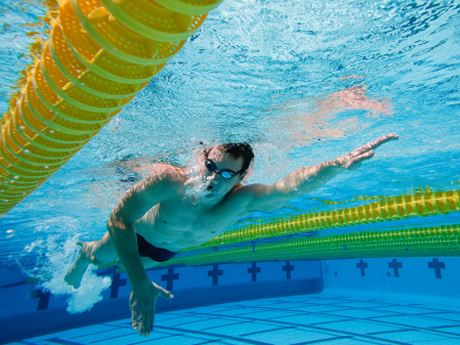
Swimming | Freestyle Swimming Techniques
Monday, June 27, 2016
The fastest swimming stroke is front crawl and so whenever freestyle is officially allowed, professional swimmers choose front crawl. For this reason, professionals call front crawl freestyle and here's how to develop an efficient freestyle technique:
Side swimming
Beginners often learn front crawl with their stomach flat in the water, but there is a better way. Side swimming or rotating from side to side uses the power of your shoulders and hips to swim more efficiently.
Float on your side with your bottom arm in front and the other arm by your side. Pull through the water using your bottom arm and as you swim, bend this arm at the elbow. Then bend your top arm and move it forward towards your head.

Elbows up – fingertips down
Bring your bottom arm up from the water elbow first and then put your top arm into the water fingertips first. Don't move your head as your body rotates; it should stay in position with the water level at mid-forehead.
When you've rotated your body fully, from your starting position to the opposite side of your body, your arms will also be in opposite positions. The bottom arm will be on the surface, acting now as the top arm and vice versa.
Kicking
Flutter kicking is moving your legs up and down with the legs straight out and going in opposite directions. If you kick more quickly, you'll advance faster - but use up a lot of energy.
And if you kick too slowly, your legs will sink and cause your body's lower section to sink as well. This slows down your stroke and makes it hard to move forward.
Breathing
Properly controlled breathing is essential to get enough oxygen to your muscles, so breathe when you're on your side – left or right. To produce a balanced stroke, you should practise breathing equally on your right and left side.
So, with your top arm bent at the elbow wait until it hits its highest point over the water and then take a breath. Your head and neck should be slightly turned towards the side of the top arm, so you can breathe correctly without interrupting the stroke.
Swimming is an excellent form of exercise that benefits the whole body, so don't worry if you struggle a bit at first – that's completely normal! Just stick at it and you'll soon be both stronger and fitter!
